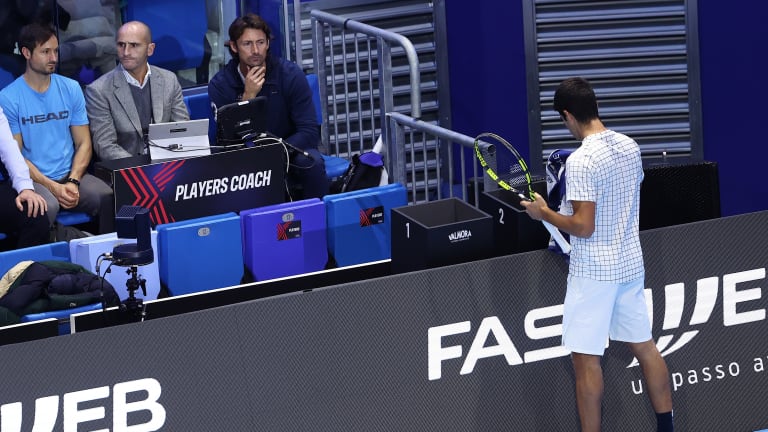Atlanta Open showcases the ATP’s new off-court coaching trial, to mixed reviews
By Jul 27, 2022Polina Kudermetova reportedly hires former world No. 1 Dinara Safina as a coach
By Dec 27, 2025“Right now, I’m hurting”: Juan Carlos Ferrero opens up on Alcaraz breakup
By Dec 26, 2025Coaching carousel continues: Grigor Dimitrov, Daniel Vallverdu split for second time
By Dec 19, 2025Carlos Alcaraz announces shock split from longtime coach Juan Carlos Ferrero
By Dec 17, 2025Daniil Medvedev announces split from coach Gilles Cervara after dramatic US Open exit
By Aug 31, 2025Elena Rybakina on return of coach Stefano Vukov: “It’s just nice to see him in the box”
By Aug 30, 2025SPOTTED: Coco Gauff training with biomechanic coach Gavin MacMillan at US Open
By Aug 20, 2025Stefano Vukov, coach of Elena Rybakina, cleared by WTA Tour to return from suspension
By Aug 08, 2025SPOTTED: Diana Shnaider trains with Sascha Bajin, Emma Raducanu with Francisco Roig, in Cincinnati
By Aug 05, 2025Atlanta Open showcases the ATP’s new off-court coaching trial, to mixed reviews
“You call out one or two phrases, and then you almost look around, wondering if you did it the right way or not,” said one coach who is now allowed to communicate with players mid-match.
Published Jul 27, 2022
Advertising
Advertising

Umbrellas, VIP guests and variable conditions are some of the obstacles players face in Atlanta amid the ATP's off-court coaching trial.
© 2022 Getty Images
Advertising

Fans got their first look at off-court coaching during last year's Next Gen ATP Finals, which often serves as a testing ground for innovations that may roll out to the main tour.
© Getty Images
Advertising

In Atlanta, the bigger Stadium Court sits the coaches at a bit of a distance from the court, with umbrella-covered VIP tables acting as a buffer on one end.
© 2022 Getty Images
Advertising

With on-court coaching (pictured) the norm on the women's tour since 2008, the WTA began their own test of off-court coaching in 2020.
© Getty Images